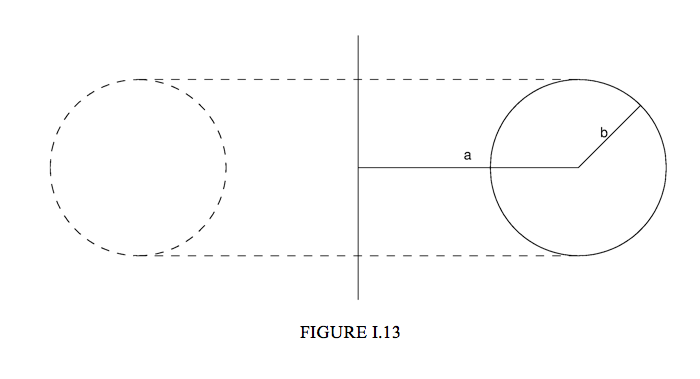1.6: The Theorems of Pappus
( \newcommand{\kernel}{\mathrm{null}\,}\)
(Pappus Alexandrinus, Greek mathematician, approximately 3rd or 4th century AD.)
- If a plane area is rotated about an axis in its plane, but which does not cross the area, the volume swept out equals the area times the distance moved by the centroid.
- If a plane curve is rotated about an axis in its plane, but which does not cross the curve, the area swept out equals the length times the distance moved by the centroid.
These theorems enable us to work out the volume of a solid of revolution if we know the position of the centroid of a plane area, or vice versa; or to work out the area of a surface of revolution if we know the position of the centroid of a plane curve or vice versa. It is not necessary that the plane or the curve be rotated through a full 360o.
We prove the theorems first. We then follow with some examples.
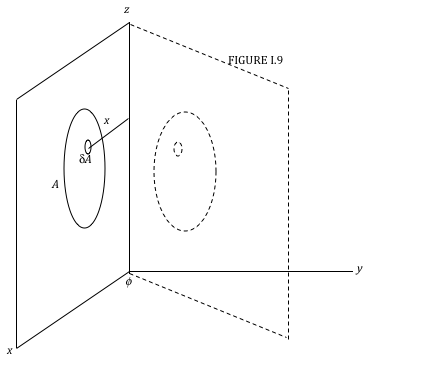
Consider an area A in the zx plane (Figure I.9), and an element δA within the area at a distance x from the z axis. Rotate the area through an angle ϕ about the z axis. The length of the arc traced by the element dA in moving through an angle ϕ is xϕ , so the volume swept out by δA is xϕδA. The volume swept out by the entire area is ϕ ∫xdA. But the definition of the centroid of A is such that its distance from the z axis is given by ¯xA = ∫xdA. Therefore the volume swept out by the area is ϕ¯xA. But ϕ¯x is the distance moved by the centroid, so the first theorem of Pappus is proved.
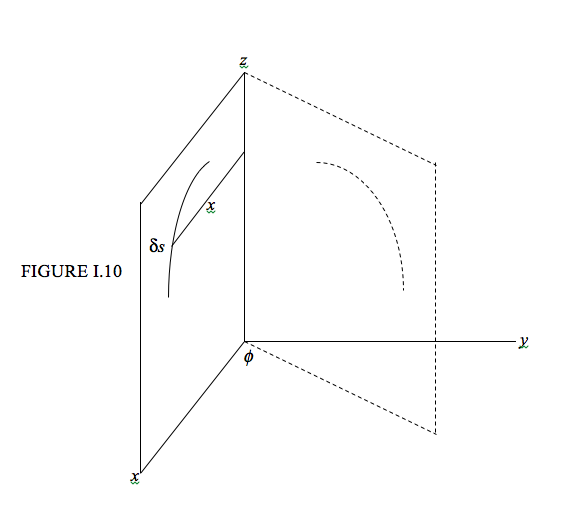
Consider a curve of length L in the zx plane (Figure I.10), and an element δs of the curve at a distance x from the z axis. Rotate the curve through an angle ϕ about the z axis. The length of the arc traced by the element δsin moving through an angle ϕ is xϕ, so the area swept out by δs is xϕδs. The area swept out by the entire curve is ϕ∫xds . But the definition of the centroid is such that its distance from the z axis is given by ¯xL=∫xds. Therefore the area swept out by the curve is ϕ¯xL. But ϕ¯x is the distance moved by the centroid, so the second theorem of Pappus is proved.
Applications of the Theorems of Pappus
Rotate a plane semicircular figure of area 12πa2 through 360o about its diameter. The volume swept out is 43πa3 , and the distance moved by the centroid is 2π¯x Therefore by the theorem of Pappus, ¯x=4a(3π).
Rotate a plane semicircular arc of length π a through 360o about its diameter. Use a similar argument to show that ¯x=2aπ.
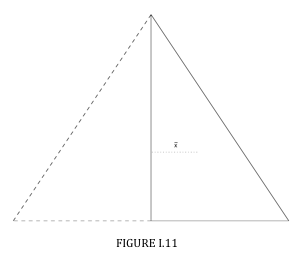
Consider a right-angled triangle, height h, base a (Figure I.11). Its centroid is at a distance a3 from the height h. The area of the triangle is ah2. Rotate the triangle through 360o about h. The distance moved by the centroid is 2πa3. The volume of the cone swept out is ah2 times 2π3, equals πa2h3.
Now consider a line of length l inclined at an angle α to the y axis (Figure I.12). Its centroid is at a distance 12lsinα from the y axis. Rotate the line through 360o about the y axis. The distance moved by the centroid is 2π×12lsinα=πlsinα. The surface area of the cone swept out is l×π lsinα=πl2sinα.
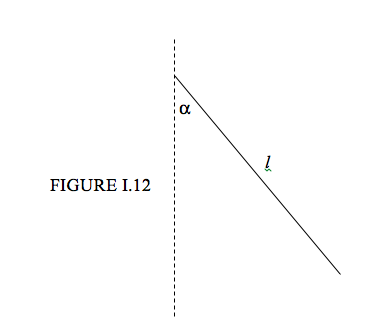
The centre of a circle of radius b is at a distance a from the y axis. It is rotated through 360o about the y axis to form a torus (Figure I.13). Use the theorems of Pappus to show that the volume and surface area of the torus are, respectively, 2π2ab2 and 4π2ab .
